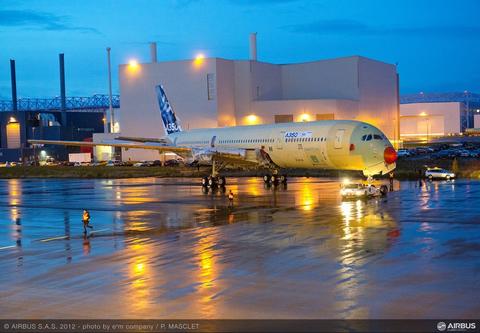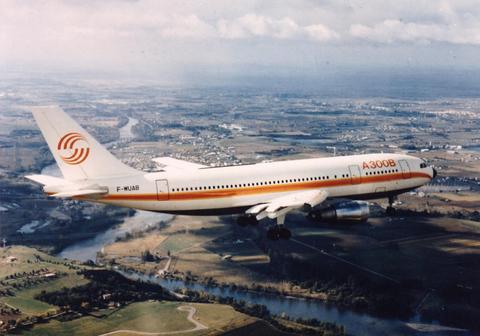The A300 programme was launched with a milestone agreement signed by French Transport Minister Jean Chamant and German Economics Minister Karl Schiller at the 1969 Paris Air Show.
At a meeting in July 1967, ministers from France, Germany and Britain agreed “for the purpose of strengthening European co-operation in the field of aviation technology and thereby promoting economic and technological progress in Europe, to take appropriate measures for the joint development and production of an airbus.”
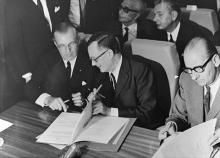
European consolidation - Concorde
The weighty language of the declaration concealed the economic reality behind the decision. In reaching this agreement, the three nations were acknowledging a simple truth: that without a joint programme of aircraft development and production, Europe would be left trailing in the wake of the Americans, who dominated the industry – and, with the planned long-range 747 “jumbo” on the horizon, looked set to consolidate their supremacy. The proud European firms which had produced some of the world’s best passenger aircraft and pioneered commercial jet travel would become little more than sub-contractors to American manufacturers. Hundreds of thousands of jobs could be at risk and European airlines would be dependent on the United States for new aircraft.
Until this point Europe’s aviation industry had remained strongly rooted in nationality. The British had built the Comet, the BAC1-11 and the Trident, among others. The French had produced the Caravelle. Together the two countries had built the world’s first supersonic airliner, Concorde. But Concorde was the product of a political dream. It was never going to be the saviour of the European aircraft industry because it was highly expensive to build and operate and catered for relatively few people. The idea behind the short-haul European airbus, on the other hand, was to capitalise on the dawning of a boom in popular air travel. More people wanted to fly, and for less.
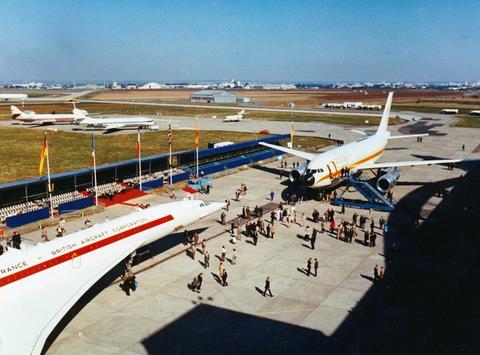
Airbus leveraged its operational experience with the Concorde for development of the A300B.
The "fathers" of Airbus
Throughout the 1960s, firms like France’s Sud Aviation and the British Aircraft Corporation planned new aircraft with the aim of catering for the growth in demand for air travel. Sud Aviation’s Galion was to be a 200-seat wide-body, while BAC talked of a similar-capacity BAC 2-11. Britain’s Hawker Siddeley Aviation planned a twin-engine stretch version of the Trident.
Hawker Siddeley Aviation also carried out joint studies with French firms Nord Aviation and Breguet for a wide-body named the HBN 100. Yet it was becoming clear that if all these aircraft were built, none of them would sell enough to make it viable.
They would be competing against one another in the same market. Only if Europe combined the considerable talents and expertise which existed in individual companies and nations and put them into one aircraft to compete directly against the Americans – who held more than 80 per cent of the world market - could there be any hope of success.
Within days of the July 1967 meeting, a brilliant French engineer, Roger Béteille, was appointed technical director of the A300 programme. Henri Ziegler, president of Sud Aviation, was later named general manager of what would become Airbus Industrie and a German politician, Franz-Josef Strauss, was made chairman of the supervisory board.
These men were to become known as the “fathers” of Airbus, along with a man whose skills Béteille recognised at once: Felix Kracht, a young German engineer, who had been working for Nord Aviation but was about to join the German Airbus group as head of sales and marketing. Kracht, who later described himself more as the “midwife” of the Airbus manufacturing system than as a father of the company, took on the role of production director: overseeing and co-ordinating the job of building the A300.
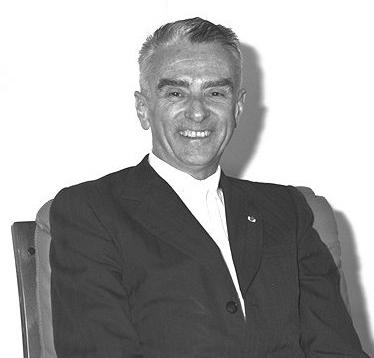
Roger Béteille was appointed technical director of the milestone A300 programe in 1967, and is considered one of the “fathers” of Airbus.

